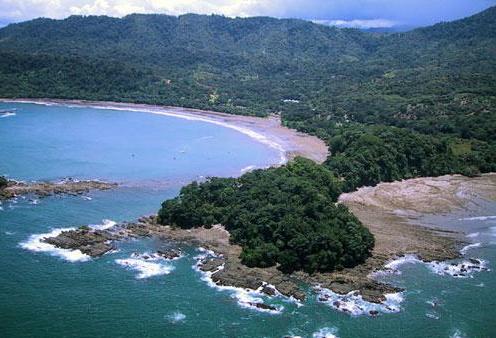Nicoya Peninsula

Okay, obviously the Nicoya Peninsula isn't a single beach. But Costa Rica
Manuel Antonio
Manuel Antonio is not only one of Costa Rica
View our Manuel Antonio Photo Gallery for some great Manuel Antonio pictures.
Playa Dominical

Mark A. Shepherd, West View Photography
Playa Dominical, about 30 miles south of Manuel Antonio National Park, is widely recognized as one of the best Costa Rica
Montezuma

Located on the inner base of the Nicoya peninsula, Montezuma is a gathering place for Costa Rica
Tortuguero

At the helm of Costa Rica Caribbean side, Tortuguero is a eco-tourist's fantasy. Travelers can experience any number of exotic attractions: tours down jungle canals in dugout canoes, scenic hiking trails, guided safaris. Sixteen of Costa Rica Tortuguero National Park
Playa Tamarindo


While Playa Tamarindo offers world-class shopping, dining, and coastal amusements, budget travelers might find themselves priced out (when I traveled there in college, I grocery shopped and cooked in a communal kitchen). But Tamarindo's natural perks make the splurge worth it -- on the beautiful beaches adjacent to Tamarindo, giant leatherback turtles (and other types) annually clamber ashore to lay their eggs.
Corcovado

Mal Pais


Surf culture is the principle philosophy in Mal Pais and its coastal neighbor, Santa Teresa. If you're not a wave-worshiper, book a boat tour and watch dolphins, manta rays, and other creatures thriving in the area's protected waters. Travelers can also hike to the Montezuma waterfalls and take a flying leap, or conquer the 4-hour trek through the Cabo Blanco Nature Reserve to its pristine, white sand beach. However, Mal Pais's own beaches are even better for stringing up a hammock and swaying in the sun.
South of Limon
South of the port city of Limon Caribbean lifestyle. The Cahuita National Park
Jaco


Right in the center of Costa Rica San Jose
Tambor


Northeast of Montezuma, Tambor's crescent-shaped bay (called Bahia Ballena) was once frequented by whales. Now, it's frequented by travelers -- enough to keep the gentle giants out at sea, but not enough to drive them away completely. The bay's mild waters make it one of Costa Rica Tortuga Island




